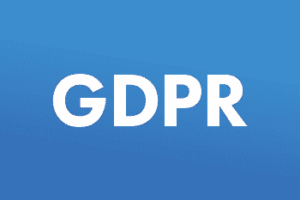For the first time, in 2019, time spent on mobile devices surpassed the amount of time that people spent watching television. With app usage comprising 90% of the time spent on mobile, companies seeking to launch a new enterprise app should use this data to maximize mobile app user engagement. Many businesses are turning to mobile development companies to improve app engagement through new, cutting-edge technologies such as predictive analytics (PA), augmented reality (AR) and natural language processing (NLP).
Increasing Mobile App User Engagement With Predictive Analytics and Machine Learning
Predictive analytics engines are data-driven pieces of technology that have the ability to boost both engagement levels and your bottom line. Predictive analytics power many familiar features, such as:
- Related product recommendations on ecommerce platforms
- “Customers also bought” product recommendations in e-shops
- Customized, highly relevant search query results targeted to your gender, age, location or interests (amongst other factors!)
Predictive analytics can maximize mobile app user engagement by delivering a more relevant, personalized experience that requires less effort or initiative on the user’s part. And the more data you obtain, the more refined your PA engine becomes. This is where machine learning can be employed to collect and process data, which is then used to recommend (or even implement) algorithm updates for your predictive analytics engine.
One of the most well-known uses of predictive analytics and machine learning technology is weather forecast modeling. Machine learning is used to collect and process data in a meaningful way; then, the new data is inputted into the weather models to generate a forecast. The predictions get more and more accurate with time as the system is supplied with an increasingly larger data set. This same concept, when applied to other PA-powered applications, can really improve user experience, delivering more relevant recommendations, results or advice.
Boost Mobile App User Engagement Rates With Augmented Reality
Augmented reality is gaining traction worldwide, as exemplified by the usage of this technology in the opening ceremonies of the 2018 Winter Olympics, where they used AR to create additional decorative elements that were not visible to in-person viewers. And ever since Pokemon GO was released, we’ve seen more and more apps leveraging AR.
Augmented reality apps have the power to engage users more effectively by turning concepts into a digital rendering that “overlays reality.” There remains an element of novelty surrounding the ability to render imagined concepts. This is perfect for applications that allow the user to preview a purchase or service, including:
- Virtual try-ons and virtual fitting rooms
- Virtual home staging
- Virtual home improvements
Beyond this, developers can also integrate augmented reality technology to deliver a richer, more engaging experience. For instance, let’s say you have an app that allows you to view bar and restaurant information and reviews. Instead of displaying a map graphic with pins in key locations, a developer could display a real-time feed from the device camera, which is then overlaid with map data, a business description and other useful information. Clearly, this is far more engaging than a plain map with a few pins!
There’s also AR’s sister technology, virtual reality (VR). At this point, VR is very novel and most uses involve gaming and entertainment. Still, it’s conceivable that developers will find new ways to use virtual reality to maximize engagement.
Maximizing Mobile App User Engagement Rates With Natural Language Processing
Natural language processing technology is most commonly encountered in virtual assistants such as Siri, Alexa and Cortana. But the potential uses for NLP are diverse and numerous. NLP is undoubtedly convenient since you can speak instead of type. This alone opens the door to stronger user engagement, as NLP allows your app to engage the user in a way that’s more natural and organic.
You can also leverage NLP to offer a more inclusive and accessible hands-free app experience. This is good not only for drivers, but also for individuals who have disabilities or physical limitations.
In order to make the most of NLP and other forms of emerging technology, you’ll need to work with a development team that has experience building apps that leverage cutting-edge advances. This is precisely what you’ll get when you turn to the experts at 7T. Our world-class team of developers specializes in many of the newest technologies, including predictive analytics, augmented reality, virtual reality, artificial intelligence and natural language processing.
Based in Dallas, 7T serves Austin and Houston. But our clients are also situated beyond Texas’ borders, as we work with clients across the country. We encourage you to reach out to our team today to discuss your project.









